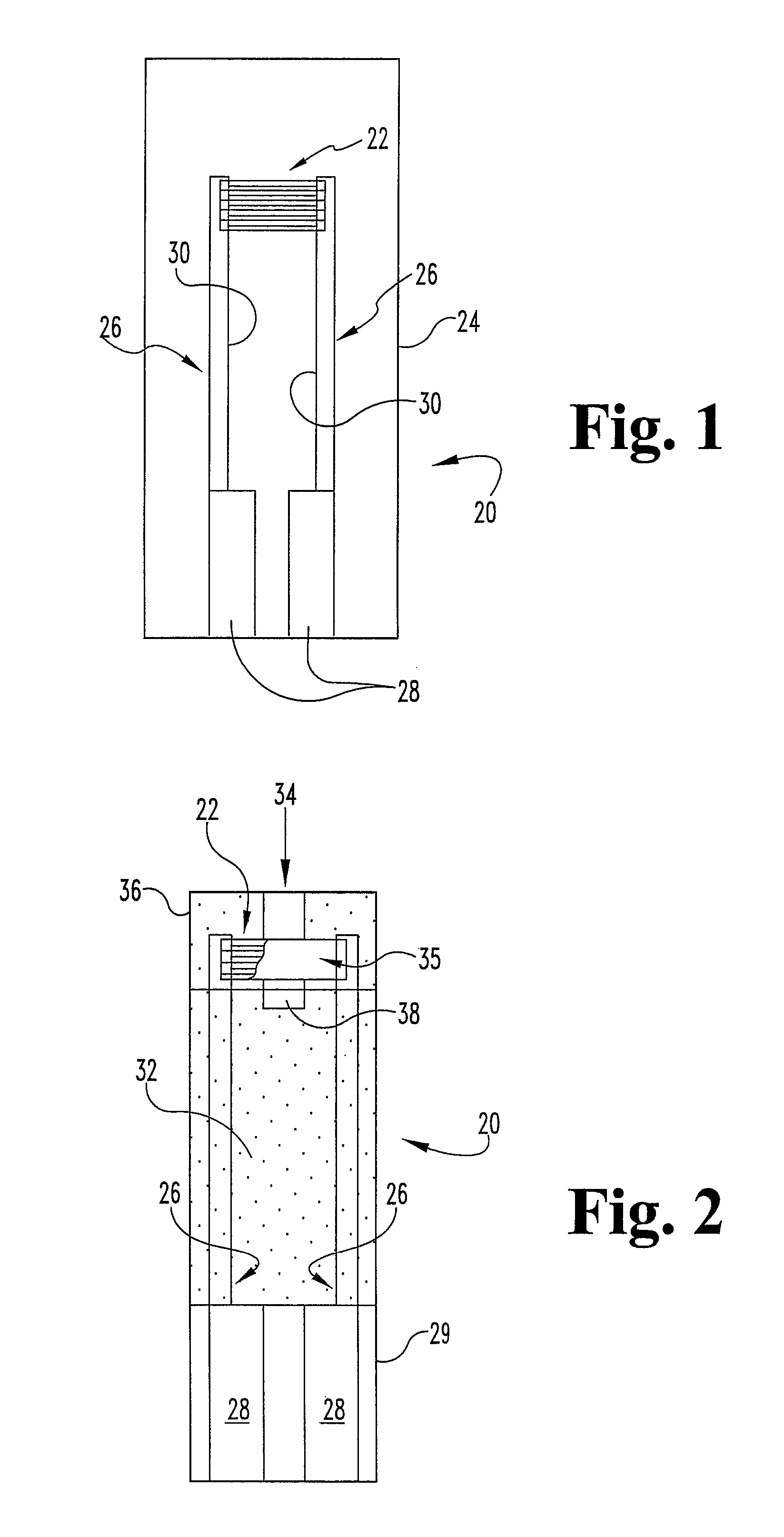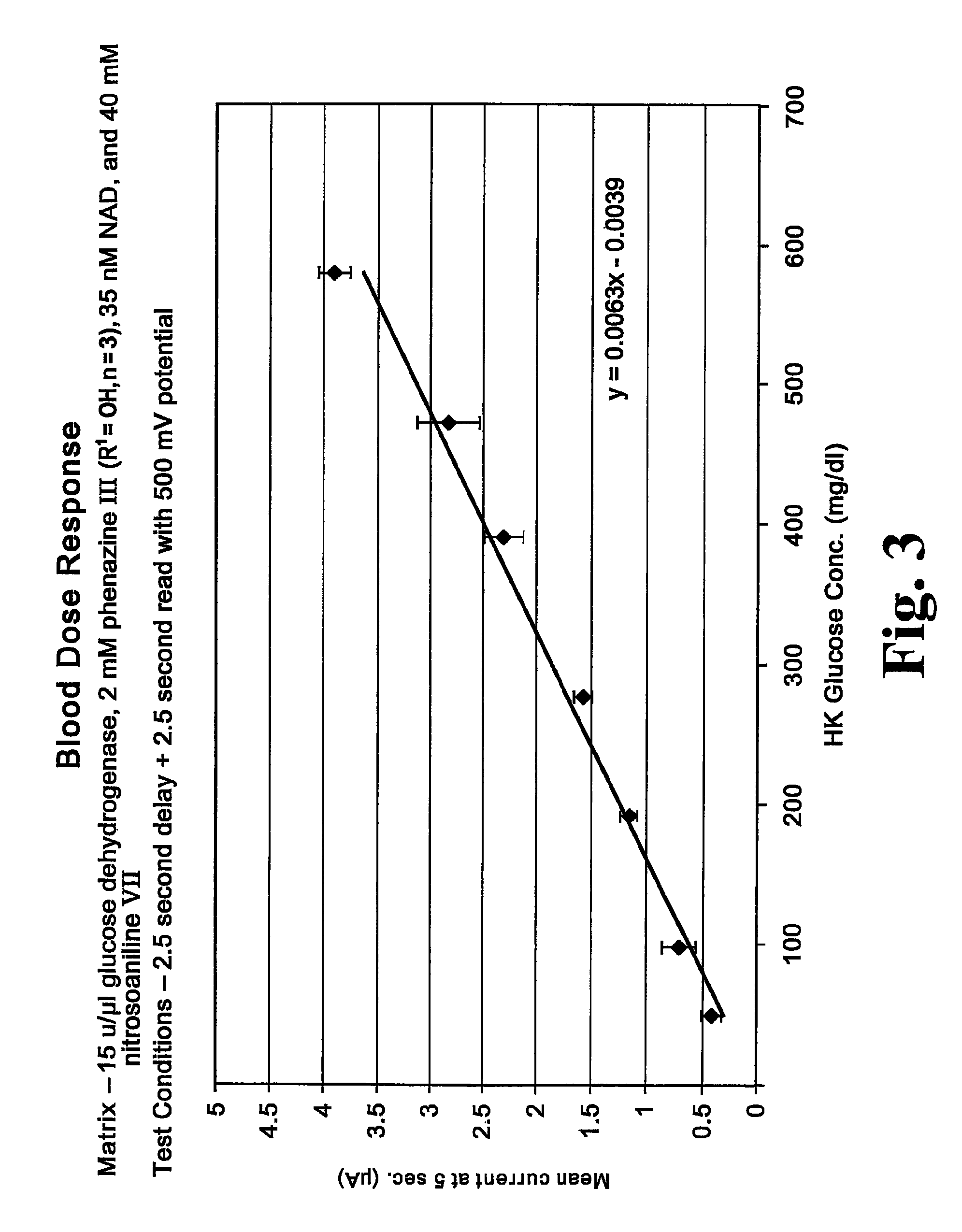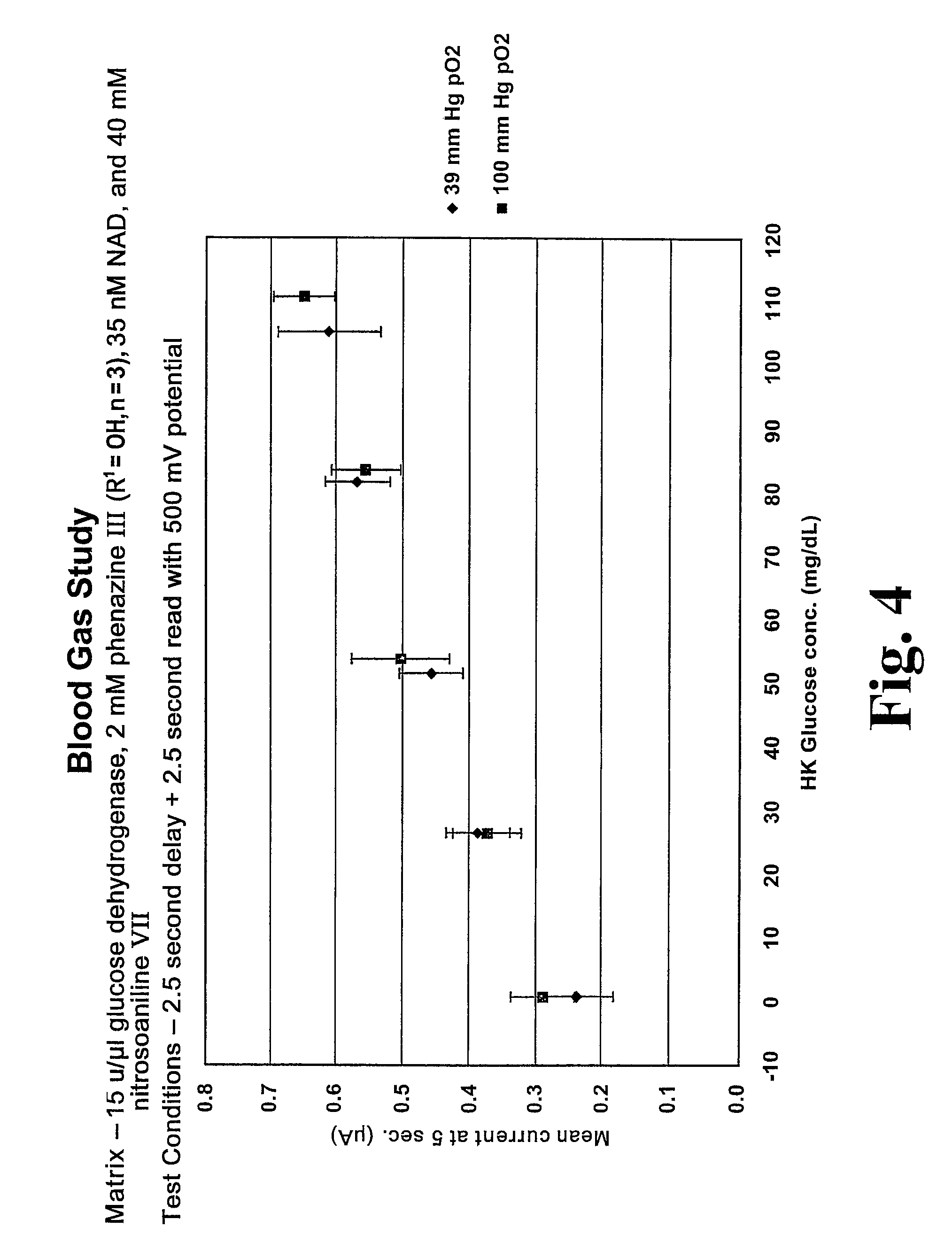Matrix composition with alkylphenazine quaternary salt and a nitrosoaniline
a technology of quaternary salt and matrix, applied in the field of matrix, can solve the problems of inability to properly control blood glucose levels, inability to use hands, feet, fingers, etc., and achieve the effect of minimizing interference and increasing specificity for analy
- Summary
- Abstract
- Description
- Claims
- Application Information
AI Technical Summary
Benefits of technology
Problems solved by technology
Method used
Image
Examples
Embodiment Construction
[0048]For the purpose of promoting an understanding of the principles of the disclosure, reference will now be made to the embodiments illustrated in the drawings and specific language will be used to describe the same. It will nevertheless be understood that no limitation of the scope of the disclosure is thereby intended. Such alterations and further modifications in the illustrated device and such further applications of the principles of the disclosure as illustrated therein as would normally occur to one skilled in the art to which the disclosure relates are contemplated as within the scope of the disclosure. In particular, although the disclosure is discussed in terms of a blood glucose meter, it is contemplated that the invention can be used with devices for measuring other analytes and other sample types. Such alternative embodiments require certain adaptations to the embodiments discussed herein that would be apparent to those skilled in the art.
[0049]The present disclosure...
PUM
| Property | Measurement | Unit |
|---|---|---|
| temperature | aaaaa | aaaaa |
| temperature | aaaaa | aaaaa |
| temperature | aaaaa | aaaaa |
Abstract
Description
Claims
Application Information
 Login to View More
Login to View More - R&D
- Intellectual Property
- Life Sciences
- Materials
- Tech Scout
- Unparalleled Data Quality
- Higher Quality Content
- 60% Fewer Hallucinations
Browse by: Latest US Patents, China's latest patents, Technical Efficacy Thesaurus, Application Domain, Technology Topic, Popular Technical Reports.
© 2025 PatSnap. All rights reserved.Legal|Privacy policy|Modern Slavery Act Transparency Statement|Sitemap|About US| Contact US: help@patsnap.com



